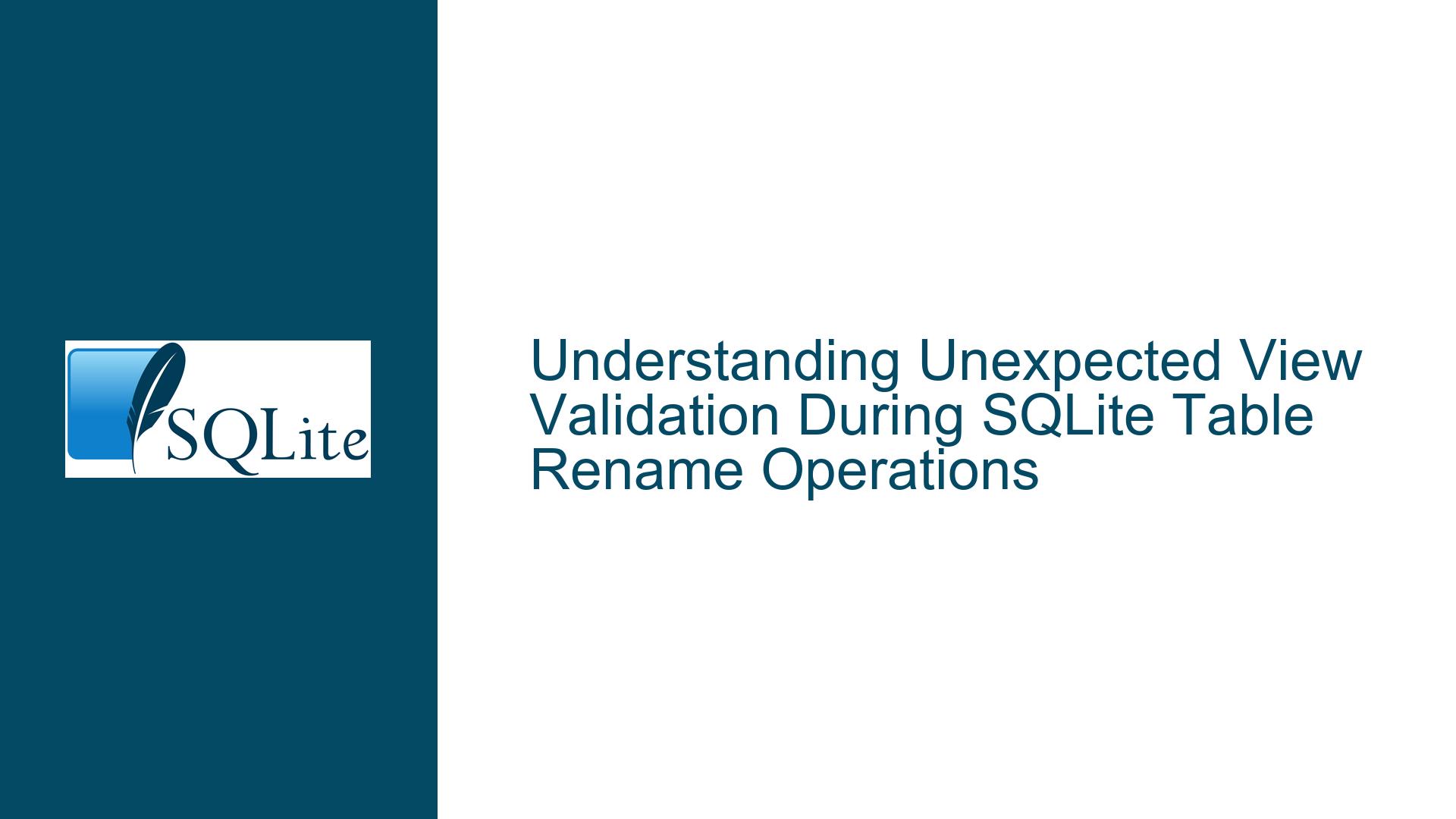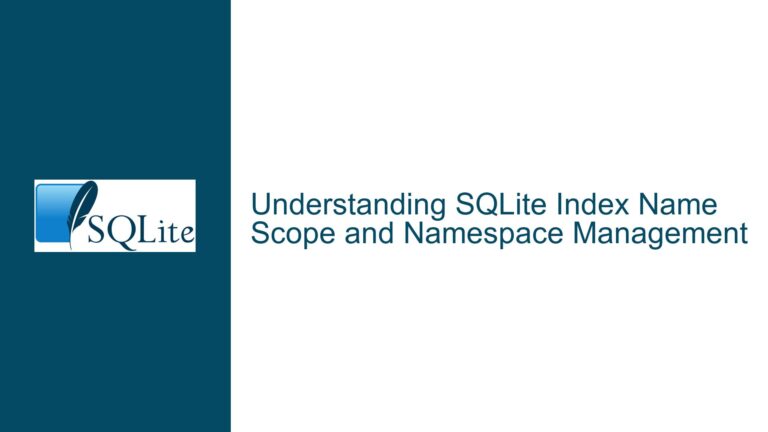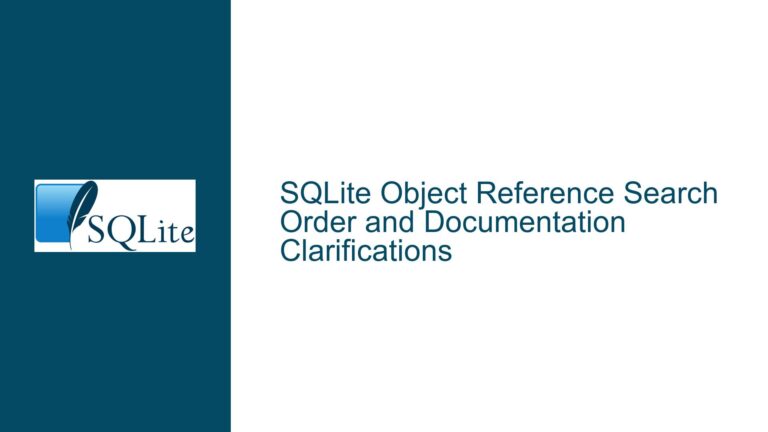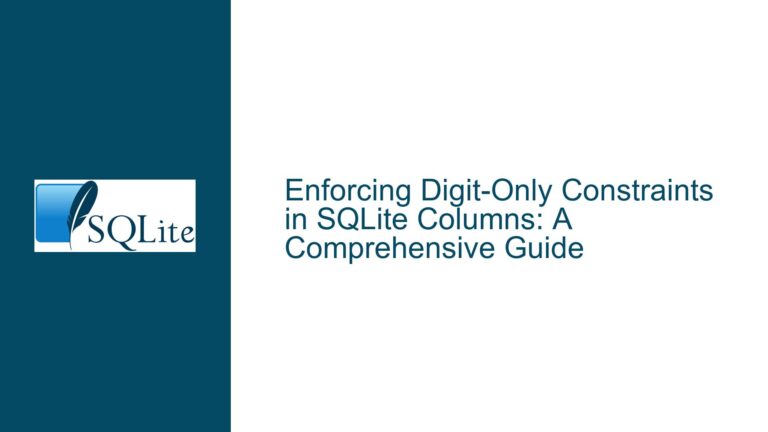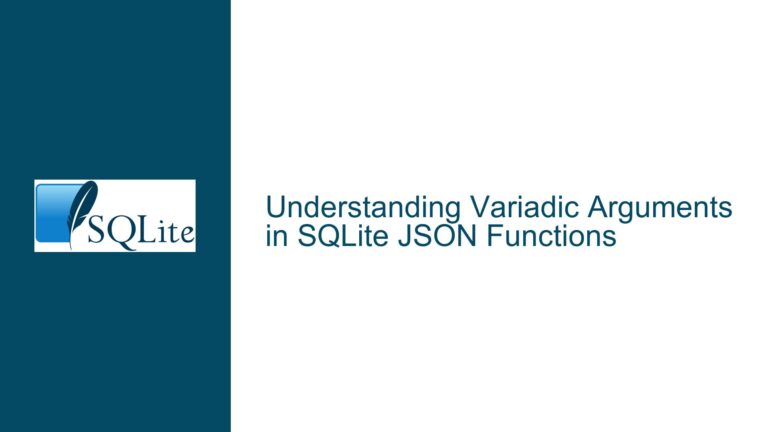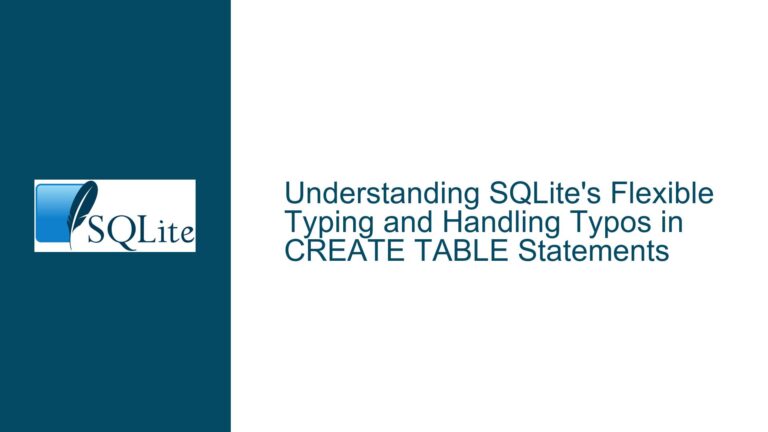Unexpected View Validation During SQLite Table Rename Operations
Issue Overview: Unexpected View Validation During ALTER TABLE RENAME
When executing an ALTER TABLE ... RENAME TO ... statement in SQLite, users may encounter unexpected behavior where all views in the database are validated, even those that do not reference the renamed table. For example, renaming a table TERMS to TERMS2 with ALTER TABLE TERMS RENAME TO TERMS2; triggers validation of every view in the schema. This includes views that were already invalid due to prior schema changes (e.g., tables being dropped without cascading updates to dependent views). The validation process may fail if any view is invalid, preventing the rename operation from completing until all invalid views are fixed.
This behavior contrasts with DROP TABLE, where SQLite does not validate views or other dependencies by default. A dropped table leaves dependent views in a "dangling" state, but the schema remains technically valid until those views are accessed. The discrepancy between DROP TABLE and ALTER TABLE RENAME creates confusion, as users expect schema-altering operations to behave consistently when modifying dependencies.
Key Observations:
- Cascading Schema Validation:
ALTER TABLE RENAMEenforces schema-wide validation to ensure that all objects (views, triggers, indexes) remain consistent after the rename. This includes updating implicit references (e.g., foreign keys, indexes) and validating views. - Legacy vs. Modern Behavior:
EnablingPRAGMA legacy_alter_table=ONbypasses validation, allowing the rename to proceed without checking dependent objects. However, this risks leaving the schema in an invalid state. - Inconsistent Handling of Dependencies:
SQLite does not validate views duringDROP TABLE, which can lead to "hidden" invalid objects. These invalid views surface only during subsequent operations likeALTER TABLE RENAME, which enforce schema-wide checks.
Possible Causes: Schema Validation Logic and Historical Design Choices
1. Schema Validity Enforcement in ALTER TABLE
SQLite’s ALTER TABLE command is designed to transition the schema from one valid state to another. When renaming a table, SQLite must:
- Update all explicit references to the table (e.g., foreign keys, indexes).
- Recompile all views and triggers to ensure their underlying SQL statements remain valid.
Views are stored as precompiled bytecode in SQLite. Renaming a table invalidates the bytecode of any view that references the table, necessitating recompilation. During this process, SQLite discovers invalid views (even those unrelated to the renamed table) because it attempts to recompile every view in the schema.
2. Legacy_alter_table Pragmatism
The legacy_alter_table pragma exists for backward compatibility. When enabled:
- The rename operation modifies only the table’s name in the
sqlite_schematable. - No cascading updates or validations occur.
This pragma reflects SQLite’s historical behavior, where schema alterations were not rigorously validated. However, using it risks creating "dodgy" schemas where objects reference nonexistent tables or columns.
3. DROP TABLE’s Permissive Validation
Unlike ALTER TABLE RENAME, DROP TABLE does not validate dependent objects by default. This design choice prioritizes flexibility over safety:
- Dropping a table immediately removes it from the schema.
- Dependent views and triggers remain in the schema but fail when accessed.
This permissiveness allows developers to defer fixing dependencies but creates "time bombs" that detonate during future schema changes or query executions.
4. View Recompilation Mechanics
Views are revalidated during ALTER TABLE RENAME because their SQL text is parsed and recompiled into bytecode. This process exposes preexisting issues, such as views referencing dropped tables, that were not addressed during prior operations.
Troubleshooting Steps, Solutions & Fixes
Step 1: Diagnose Invalid Views and Triggers
Before attempting a rename, identify invalid objects using:
PRAGMA schema_validation;
This pragma checks the entire schema for inconsistencies. If it reports errors, note the invalid views or triggers.
For a targeted approach, query the sqlite_schema table and use EXPLAIN to test view validity:
SELECT
name,
type,
sql
FROM sqlite_schema
WHERE type IN ('view', 'trigger');
-- Test a specific view
EXPLAIN SELECT * FROM problematic_view;
If the EXPLAIN command fails, the view is invalid.
Step 2: Resolve Invalid Views
Option A: Repair or Remove Invalid Views
Update views referencing dropped or renamed tables. For example, if a view old_view references a dropped table DEPARTMENTS:
DROP VIEW IF EXISTS old_view;
-- Recreate with corrected logic
CREATE VIEW new_view AS SELECT ... FROM current_table ...;
Option B: Use LEGACY_ALTER_TABLE Temporarily
Bypass validation during the rename:
PRAGMA legacy_alter_table=ON;
ALTER TABLE TERMS RENAME TO TERMS2;
PRAGMA legacy_alter_table=OFF;
Caution: This leaves the schema in an invalid state if views reference the renamed table.
Step 3: Prevent Future Issues with Schema Hygiene
A. Enable Strict Schema Validation
Add checks during schema modifications:
-- After dropping a table, validate the schema
DROP TABLE departments;
PRAGMA schema_validation;
B. Use Dependency Tracking Tools
Leverage SQLite’s bytecodevtab extension or pragma functions to track dependencies:
-- Example using tables_used pragma function
SELECT * FROM pragma_tables_used('SELECT * FROM problematic_view');
This identifies tables referenced by a view, helping you audit dependencies proactively.
C. Adopt Cascading Schema Changes
Manually implement cascading updates when renaming or dropping tables:
-- 1. Drop dependent views
SELECT 'DROP VIEW ' || name || ';'
FROM sqlite_schema
WHERE sql LIKE '%old_table%' AND type = 'view';
-- 2. Rename table
ALTER TABLE old_table RENAME TO new_table;
-- 3. Recreate views
CREATE VIEW restored_view AS SELECT ... FROM new_table ...;
Step 4: Advocate for Consistent Validation Semantics
To align DROP TABLE with ALTER TABLE RENAME, petition for a PRAGMA legacy_drop_table or similar setting. Until then, enforce consistency through manual checks:
-- Hypothetical strict mode
PRAGMA strict_drop_table=ON;
DROP TABLE departments; -- Fails if dependencies exist
Step 5: Automated Schema Migration Scripts
Develop scripts to automate dependency resolution. For example, a Python script using sqlite3 module:
import sqlite3
def rename_table_safely(db_path, old_name, new_name):
conn = sqlite3.connect(db_path)
cursor = conn.cursor()
# Find views depending on old_name
cursor.execute(f"""
SELECT name, sql
FROM sqlite_schema
WHERE type = 'view'
AND sql LIKE '%{old_name}%'
""")
dependent_views = cursor.fetchall()
# Drop and recreate views
for view_name, view_sql in dependent_views:
cursor.execute(f"DROP VIEW {view_name}")
new_view_sql = view_sql.replace(old_name, new_name)
cursor.execute(new_view_sql)
# Rename table
cursor.execute(f"ALTER TABLE {old_name} RENAME TO {new_name}")
conn.commit()
conn.close()
Final Recommendations
- Avoid LEGACY_ALTER_TABLE: Despite its convenience, it risks schema corruption.
- Validate Early, Validate Often: Use
PRAGMA schema_validationafter schema changes. - Document Dependencies: Maintain a record of views and triggers tied to critical tables.
By understanding SQLite’s validation mechanics and adopting proactive schema management, developers can mitigate unexpected errors during table renames and maintain robust databases.
